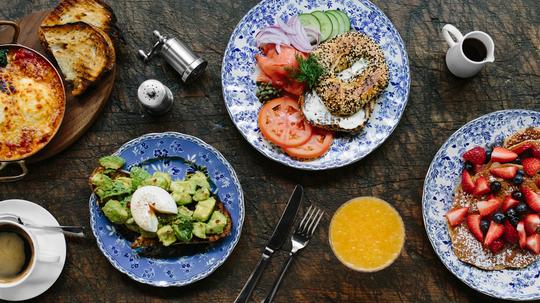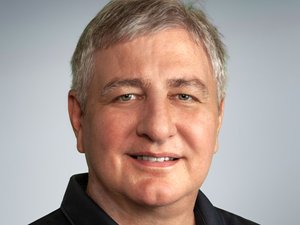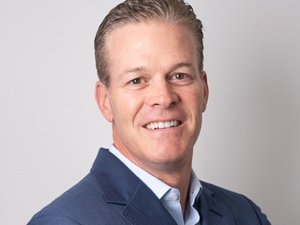
This contributed post was written by Clint Perez, a senior account director at Neustar, Inc. with over 20+ years of experience in marketing with Apple, Best Buy, Discovery Communications and LivingSocial. Perez is a native Washingtonian who in his spare time mentors startups in the D.C. area. He and Alan Clifford worked together at LivingSocial in 2013-2014.
Alan Clifford has been around entrepreneurship all his life. His parents owned and ran a restaurant, which he often thought he would also do after college. But good friend Tim O’Shaughnessy convinced Clifford to put his restaurant dreams on hold and to join him at LivingSocial.
“Tim was instrumental in me following an entrepreneurial path,” he said. “Now at Galley, I get to combine my love of food with growing and scaling a business.”
Clifford has learned a lot of valuable lessons along the way. But even he admits that the lessons keep coming after over a decade on the D.C. startup scene. In this Q&A, he shares his perspective on what it takes to be a successful entrepreneur as well as some interesting tidbits on D.C. culinary tastes.
Q. Can you share with us how things are going?
We started in January 2015. I can honestly say that when we got into this, I did not know what we were getting ourselves into. When you think about our business we are doing everything from sourcing of ingredients all the way through to cooking, delivery, customer service, marketing and all those things on top of that. It’s been a really fun challenge.
The first two years for us were crazy growth, growing hundreds of a percent per year. In the third year, we hunkered down and realized the way to actually scale this business was to make sure the unit economics were profitable and to get to profitability as a company. So we slowed down growth and really focused on getting the business economics in line, which we did. So now we’ve basically been break even since the fall of last year. Now that we’re in busy season, we’re focusing on growth again. And of course, we have a good understanding of how the business works and can focus everything we do on getting back to a 50-plus percent annual growth rate while maintaining a healthy, profitable business.
Q. What are the most popular meals on Galley? What do you like to eat?
Well I’ll tell you one thing that I’ve realized is that what customers want isn’t always exactly the same thing that I do. Our most popular dishes are anything with salmon in it. The D.C. market, for whatever reason, has a crazy appetite for salmon. Crab cakes also do really well. And then all those meals that are incredibly complicated and hard to cook, like Beef Bourguignon, chicken pot pie, things that would take a lot of effort at home. All those dishes do pretty well.
Q. How does Galley source its ingredients?
We focus on local produce and proteins when possible. What that really means is that in D.C. our growing season is only four-and-a-half months. During that time we source over 80 percent local produce. Over the winter it’s less because local isn’t as available.
The hard thing about doing organic in D.C. is that most of the organic produce comes from South America and the environmental impact of transporting all that produce back to D.C. pretty much outweighs all of the benefit of an organic produce lifestyle. The thing we really do put a lot of focus on is our proteins. We’re using Bell & Evans air-chilled chicken, the most premium brand you’ll find at Whole Foods. We’re doing all sustainably raised seafood. All of our beef is local. So we’re trying to focus on the areas where we know we can get the absolute best product locally.

Q. What are you excited about at Galley Foods right now?
There are two big areas where we’re investing a lot of time and energy. We now service next-day delivery from North of Manhattan all the way South to Raleigh, N.C. You can order on the website and through Fedex and some local carriers, we will deliver a box of meals to you the next day. Our addressable market is significantly bigger than it was even just a few months ago.
Secondly, the big opportunity if you think about our business today, it’s largely focused on delivering to customers prepared meals for their home. We’re starting to branch out to other delivery and retail channels to sell our product. That’s everything from selling at coffee shops and organic markets to where you can find Galley at many different places besides just our website.
Q. What is your biggest challenge at Galley Foods?
We run a lot of tests. What we’ve always seen is that the non-conventional marketing methods always work better for us. We spend significantly more in offline marketing in comparison to digital. The biggest source of new customers for us is still referral. So, we’re working on a lot of tests and iterations of our referral program to make that an even better experience and fruitful experience for the person that is receiving the referral and who is trying out Galley for the first time.
Q. What lessons did you learn at LivingSocial that you applied when you started Galley?
I think one of the biggest ones is not getting hung up on any one decision. There are very few things that you do that you can’t either walk back or change or readjust. That was one of our big things at LivingSocial is that there were few decisions that were finite or that you could never change down the road. That’s probably one of the biggest principles we’ve applied.
The second is the test and iterate mindset. There are some things here that are incredibly hard to test, but anything we can test we do to make sure we’re making the right decision before rolling out more broadly.
The last thing is that the people that you hire really matters. We’ve made sure that we’ve hired a really great team and when we’ve need to course correct, we’ve done that. But having the right group of people on the bus really matters.
Q. Any advice for your fellow entrepreneurs?
My big advice from now doing this is don’t be scared about not raising a big round of financing and focusing on profitability. A lot of times it ends up making you a much healthier business down the road. If you look at us in comparison to everyone else in the market, my biggest competitor is Munchery, which raised $103 million and has the exact same footprint as us on the West Coast. Galley did that on raising $3.5 million.
There are benefits to figuring out your business and getting it right. Sometimes you have to push back a little bit on your investors to make sure they understand that’s the only way you’re going to be able to survive. That’s what everyone is in it for anyway.




